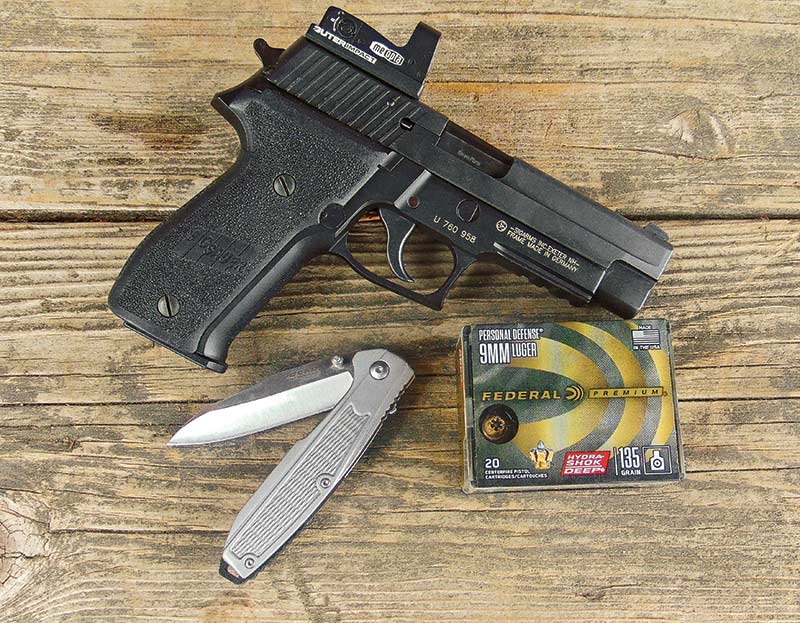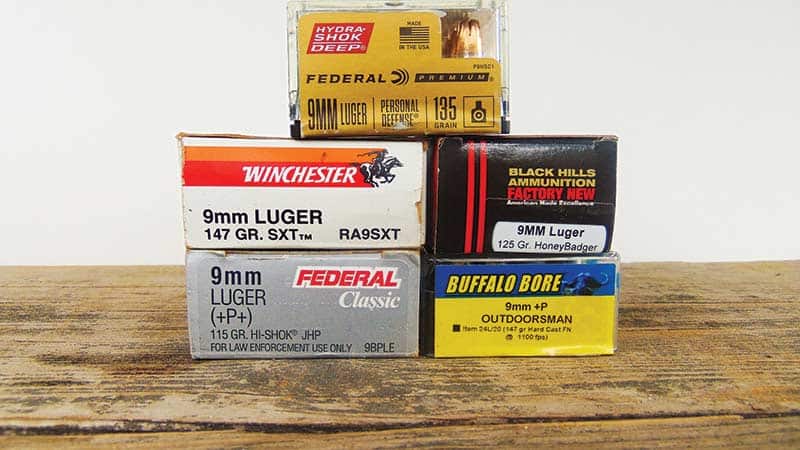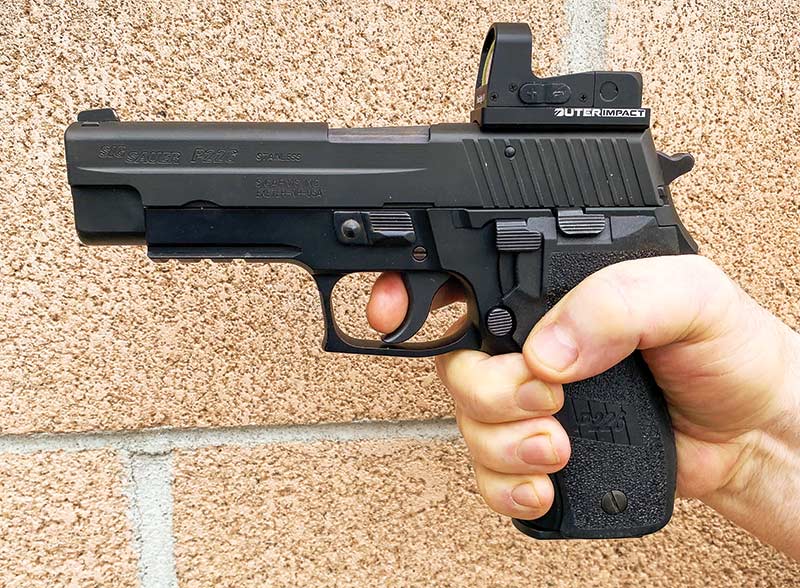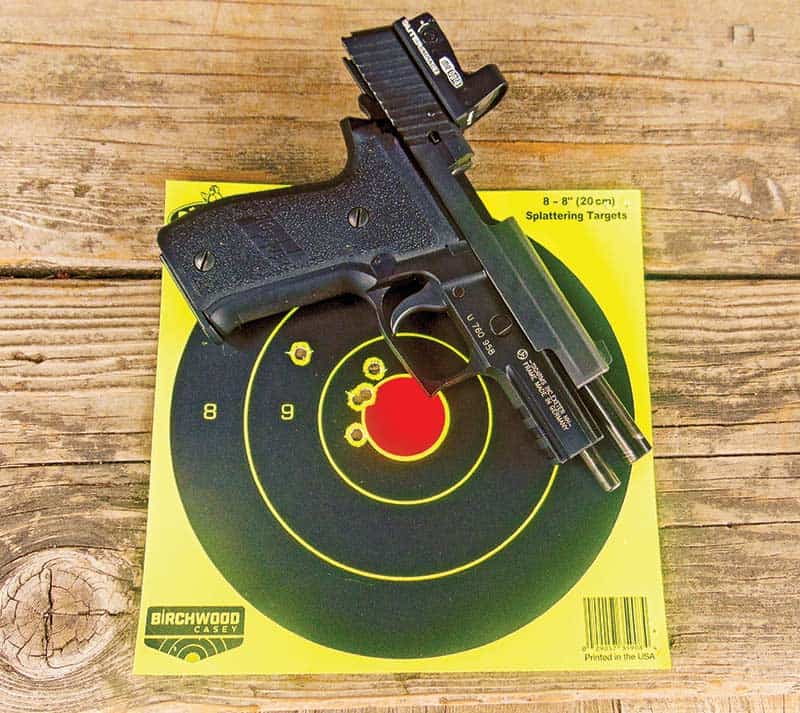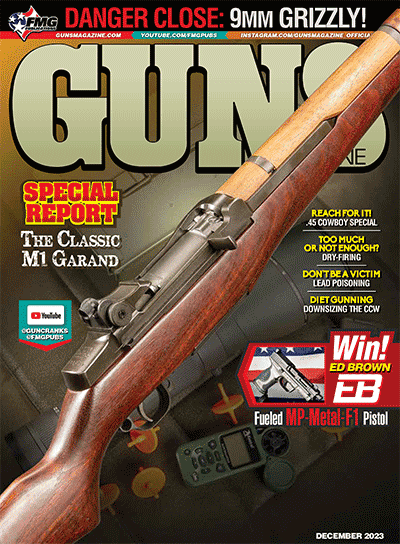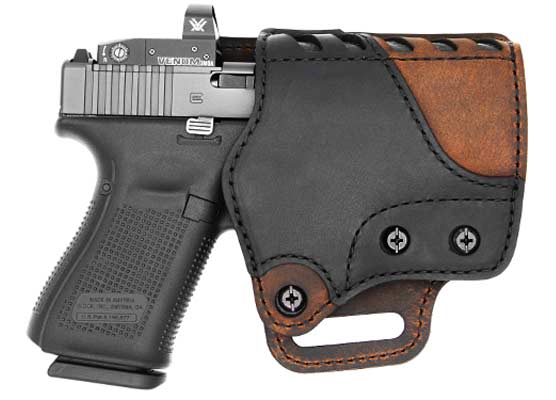SIG P226
A More Perfect NINE GetS Optical Enhancement
Somewhere along the line during the past 40 years, the 9mm auto became “coin of the realm” in LE, military and, yes, civilian use.
They’ve been around longer, of course, since the days of the Luger P-08 and later P35 Browning Hi-Power. But when you’re talking about iconic 9s still in widespread use, few have matched the reputation or garnered the critical acclaim of the SIG P226.
Originally introduced in 1984, the P226 is a traditional SA/DA auto and as such, stood tall against the avalanche of polymer-framed, striker-fired competition — the Springfield XDs, GLOCKs and S&W M&Ps. In fact, the SIG made its appearance a scant two years prior to the appearance of GLOCK’s groundbreaking G17.
Many felt the P226 should have been the overall winner of the somewhat contentious 1984 service pistol trials to select a 9mm replacement for the storied 1911A1. However, the virtues of the P226 were not lost on the Navy SEALS who adopted a corrosion-resistant version for themselves.
Dimensionally and weight-wise, the P226 was as follows: 34 oz. weight, 7.7″ OAL, 4.4″ barrel, 1.5″ width. Of course, there are other more discreet compact options for CCW carry than a P226. But for open carry in the field (or anywhere for that matter), there are plenty of holster options for an “optically enhanced” full-size 9mm. And, if you’re in a jurisdiction amenable to high-capacity magazines, you can have quite a bit of precision firepower on tap with it.
Back Then
My first experience with the P226 was around 1998. I shot it at 25 and 50 yards from a sandbag rest using “nuthin’ fancy” standard-pressure 115-grain Winchester Super-X FMJ ammo and came away with the conviction the P226 was one of the most accurate out-of-the-box 9mms I’d ever laid a hand on, right up there with the company’s ultra-premium P210 or the CZ-75.
One of the major arguments advanced in favor of striker-fired pistols makes much of the fact they have a consistent trigger pull. Our current test P226’s DA trigger was a long-yet-reasonably-smooth 9.5 lbs. — considerably superior to my teenage recollection of wrestling the DA trigger on a milsurp Walther P-38. But once you get beyond it, the SA pull was a very-crisp 3.5 lbs. and more manageable than any striker-fired gun I can recall.
If you’ve been shooting double-action revolvers much, the long DA take-up of the P226 may be a bit disconcerting but weight-wise you’re not losing much. Plus, the de-cocking lever allows you to put the gun back in DA mode in an instant if you don’t mind returning to the long first-shot pull. As of 2010, SIG gave the P226 an ergonomic makeover that reconfigured the grip to make for an easier DA trigger reach for shorter-fingered shooters.
Optically Enhanced
Fast forward about a quarter century and I found myself at the range with our P226 of 2004 vintage, only this time, in deference to aging eyes, it featured a Meopta MeoSight IV along with a pretty nifty assortment of high performance 9mm ammo.
This batch included both current and recently obsolescent offerings, featuring Federal Premium Hydra Shok 135-grain, Federal Classic +P+ Hi-Shok 115-grain JHP, Black Hills 125-grain HoneyBadger, Winchester Ranger 147-grain SXT and Buffalo Bore +P 147-grain Hard Cast FN Outdoorsman.
Velocities from the 4.4″ barrel of our P226 were very close to factory claims in all cases. The spread was slightly over 1,025 fps (Winchester Ranger 147s) up to 1,350 fps Federal Classic 115 +P+.
A startling performer, and the king of the heavyweight class, was the Buffalo Bore 147-grain HC Outdoorsman that exceeded the factory claim of 1,100 fps by about 50 feet. If you happen to be looking for a 9mm load punching above its weight, this is probably it.
Shooting our Meopta-equipped P226 at 25 yards was made easier by dialing the dot intensity down. The dot is rated at 3 MOA but the brighter you crank it, the bigger it seems. At 50 yards, dialing it down suddenly went from “easier” to “essential.” At full intensity, the dot is most effective at off-muzzle distances to about 50 feet. It’s big, bright and easy to pick up quickly. If you need to be prepared to shoot in a hurry, big and bright is best — almost like the reverse of a variable scope in a still-hunting situation where you usually have more time to dial the power up for the long shots than down for the close ones.
In terms of SA mode accuracy, our P226 showed a decided preference for the heavyweights. Specifically, Winchester Ranger 147-grain SXT ammo, although all other weights punched more than acceptable groups at 25. By “acceptable,” we’re talking 2″ to 4″.
We tried two of the best 25-yard performers at 55 yards (our maximum “to the berm” distance) from a sandbag rest. The Ranger 147s rewarded us with a 5-shot 2.5″ group, which is about as well as we can do with most any handgun at this yardage. This “best of” effort showed a distinct leftward bias and once we adjusted the sight to correct, we were unable to duplicate the group size! The 135-grain Federal Premium Hydra Shok came in at 4″. There are enough styles and weights of 9mm out there to allow enough experimentation to find the right match for any pistol.
At last check, SIG catalogs eight full-size variants of the P226 platform, not to mention the compact P228 and P229 models. The P226 line encompasses different finishes, grip panels, DAO and SA-only options, sighting arrangements and slide configurations. This just “shows to go-ya” when you start with a solid framework from the start, specialized variants seem to multiply and cover such calibers as the .40 S&W and .357 SIG.
But even in original trim as-is dead-stocks 9mm Parabellum, the P226 is pretty tough to beat. After all, it’s pretty much a 9mm world out there.
